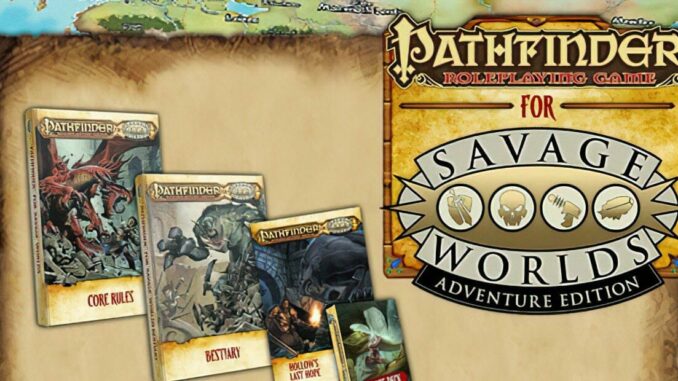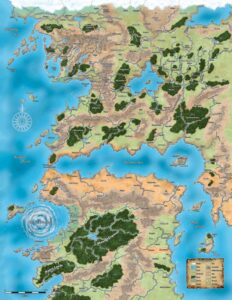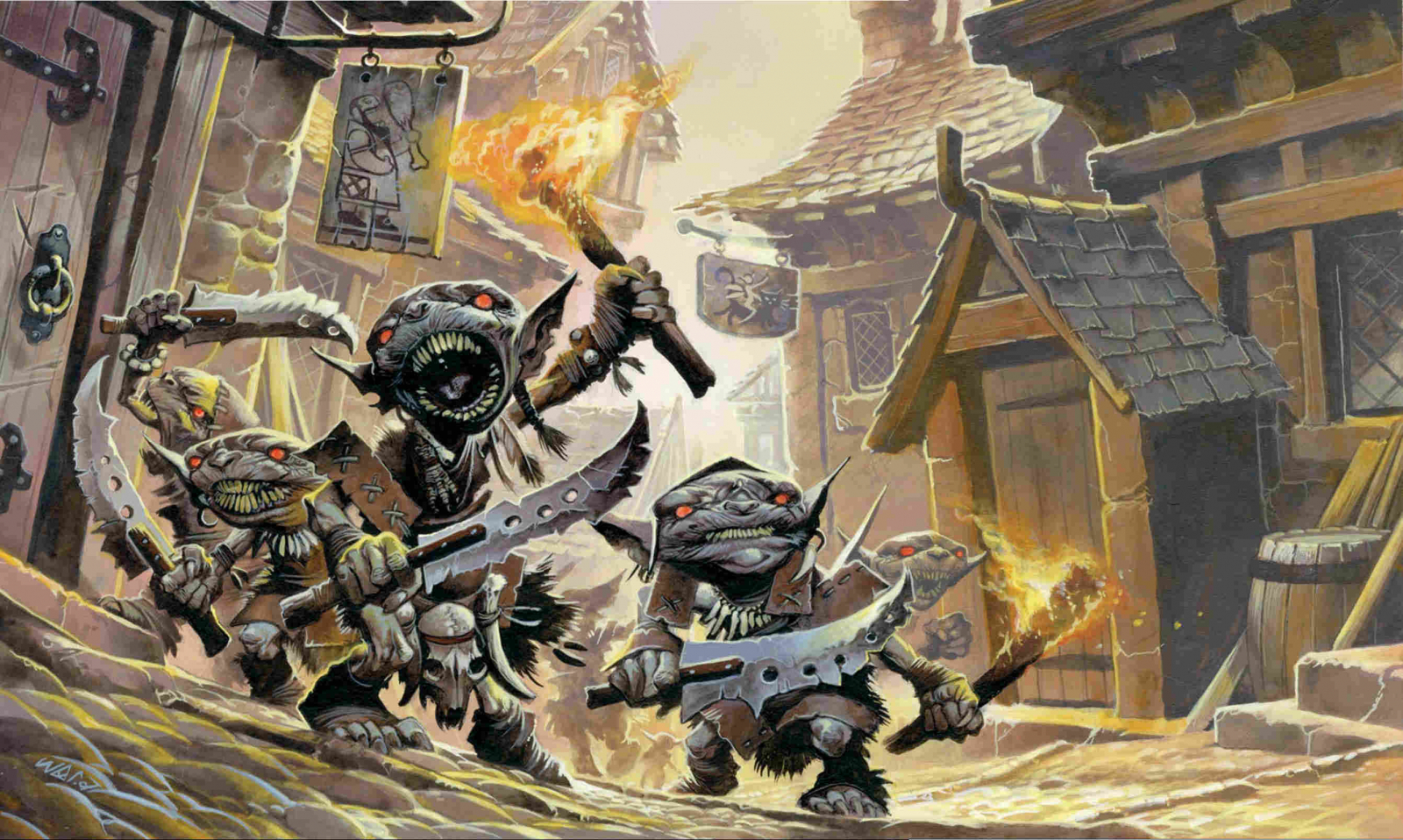
Back towards the beginning of summer, I gave an initial review of the Pathfinder for Savage Worlds Core Rulebook after a friend decided to run the Rise of the Runelords Adventure Path for some of us. We finally got things started and have about a half a dozen sessions under our belt and appear to be fast approaching the final third of book one. So I figured I’d give an updated review of the game now that we’ve had it on the table.

The biggest thing that they’ve managed to do is capture the feel of Pathfinder and Golarion with this release – at least at low levels. I’m playing in a group of five people and we all have different classes – a fighter, a druid, a wizard, a monk, and my paladin. And while there is definitely some slight overlap in a few capabilities (generally in the realm of combat), we all feel like very distinct characters with very distinct individual roles in the party. The Class Edges that they have created to encapsulate the eleven major classes all seem to do a very good job in representing a low level version of that class in play. I’m looking forward to getting into higher ranks of play and really putting some of the higher level abilities of these edges such as my paladin’s spellcasting into use as well as some of the more general edges such as our wizard getting access to more spells or our fighter and monk getting more capable in combat.
Savage Worlds sells itself as “Fast, Furious, and Fun” which really lends itself to the concept of low-level fantasy play. The only problem that I’ve encountered is that the combat can get very “swingy.” The encounters we’ve been put up against seem to go one of two ways – the dice are very much on our side and we cut down goblin after or goblin without being at too much risk or we can’t seem to score a hit and it takes more resources as we’re forced to soak more hits from the opponents. This isn’t always a bad thing though, and it’s not necessarily the fault of the system. It’s definitely led to some tense dice rolls and clutch moments at certain times which heightens the experience. It’s just a rough go sometimes when you go couple of rounds without contributing anything of real value to the combat. I’m very curious to see how that scales with what would be considered “high level” play in Pathfinder. Given that characters and monsters in Savage Wounds don’t gain more wounds like Pathfinder characters and monsters do hit points, higher end battles are not likely to last much longer than “lower level” combats, but time will tell as we get access to stronger and more potent defenses and more ways to inflict conditions on targets. Either way, I’m excited to cross that threshold when we come to it.

One thing that I’ve noticed with Pathfinder games is that the rolls can often get in the way of the story, especially with a binary pass/fail mechanic. Now that’s not to say that Savage Worlds doesn’t have that same pass/fail mechanic, but the odds are generally much more in the player’s favor with (usually) lower difficulty numbers beyond certain creatures and characters built for combat or very esoteric knowledge. And with a players getting two potential dice to earn success on, exploding dice, and having access to rerolls through spending bennies it puts the chances of success firmly on the players’ side. Finally, the concept of Raises is present within the rules – if you beat a difficulty by 4, you earn a raise. And each additional multiple of 4 you beat the difficulty number by earns you another raise. Sometimes that’s important, other times it’s not, but it can be a great way for GMs to “gate” special or obscure information behind regular checks while still allowing for more basic information to be learned on simple checks. Yes, this can be done in a d20 system with DC charts, but unless you have characters highly specialized in those more esoteric skills, you just aren’t going to see those higher DCs met as often.
All in all, this game has done a wonderful job emulating the early feeling of a Pathfinder game, and I can’t wait to see where it goes from here. As I mentioned in the 2021 Gift Guide, I highly recommend checking this release out if you have even a slight interest in it. Now if you’ll excuse me, I’m going to go and plan out a couple of advances for this character while getting more excited about what he’s going to become capable of.
